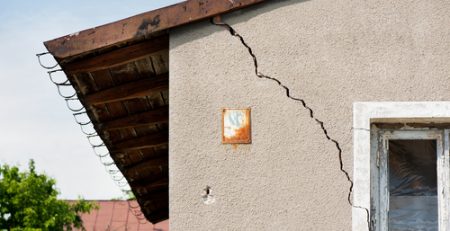How to Repair Cracks in Walls and Why do they appear?
How to repair cracks in walls and why do they appear? Cracks on walls are common in old homes. Sometimes it might be giving insights into some serious problems. Other times it might be something that affects just the cosmetics of your house.
Anyways, this blog post will give you insights on how cracks on walls occur, how to know if it is dangerous, and many more sensible things!
Why do Cracks appear on Wall?
The materials (painting, plaster) that shape your wall contract and extend due to variations in humidity and shifts in temperature. This is typically an issue if the wall is constantly air-conditioned in a room, or if it faces the sun in the afternoon. The movement of contraction and expansion will contribute to hairline cracks.
Patience is also the only path to go. It is generally very normal to not allow cement plaster absolutely dry before adding colour. But switch Netflix on and hang out! It’s safer than getting fresh paint to refurbish the walls.
So, someone who did the rendering job for you might be responsible for the cracks appearing on your house. Quality of materials used while rendering can also answer the questions in a lot of cases.
What we can do to avoid Cracks in Walls?
Avoiding the cracks in walls is not rocket science, but it depends on a lot of things. It depends on simple things like choosing the best materials, the best quality of bricks, assembling materials in such a way that movement is avoided, etc.
In addition to those, there are other things that come into the scene, like the experience of the renderer you are working with and also the quality of materials they are using. An expert renderer is able to give you insights on things that are reasonable to do in your case!
How to know if cracks in Walls are dangerous?
Wall cracking may be ugly and it can also be an indication that your focus is needed on something structurally important. The positive news is that fractures are sometimes created over time by settlement, and nothing serious occurs.
Measure the depth of cracks using a measuring tape. Usually, larger cracks indicate more severe problems than thinner cracks. Cracks smaller than 1/8-inch deep are called stress cracks and are harmless, whereas cracks 1/4-inch deep and wider are sometimes more severe.
How to Repair Cracks on Walls?
Fixing hairline cracks
Don’t worry if you notice a hairline break! During your period with a contractor, most hairline cracks may be resolved using a DIY task. It may seem counterproductive, but you should first build a deeper hairline crack before you start fixing it (using a scraper, screwdriver or tool knife).
The crack is exposed so that you can remove the loosened concrete, dirt, residue or old filler before mending (using cloth, dry brush or vacuum). It also tends to fill the interior of the crack properly. Cover it with filling solution/joint fluid after the crack is washed.
Check that the filler fills the whole split. Even though your scraper is off the surface let it dry for a day. Don’t hurry the process! Don’t rush the process!
When the surface has cured, sand it down such that the surface is smooth and even. Then add paint. Then apply. Where two coats are applied, always ensure that the first coat is fully dried until the second coat is applied.
Fixing dangerous cracks
It is highly recommended to contact a rendering service in order to inspect the crack that looks potentially dangerous to you. Even if you fix the crack, the underlying cause might be still around making your house more vulnerable.
A professional rendering serviceman will be able to suggest you the best options when it comes to repairing cracks in your Sydney homes.











